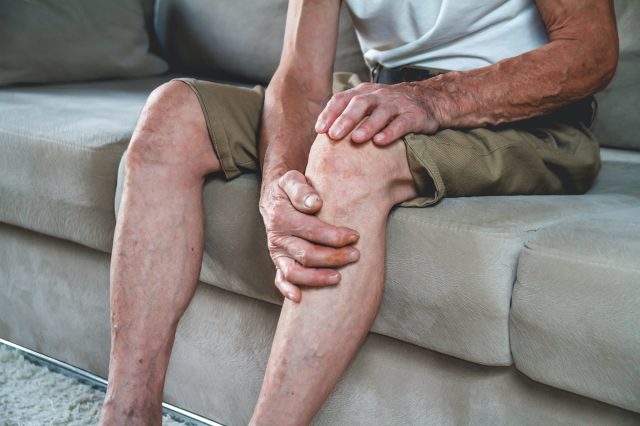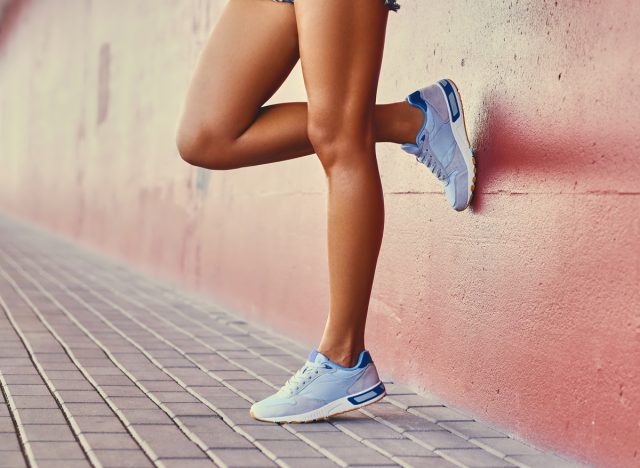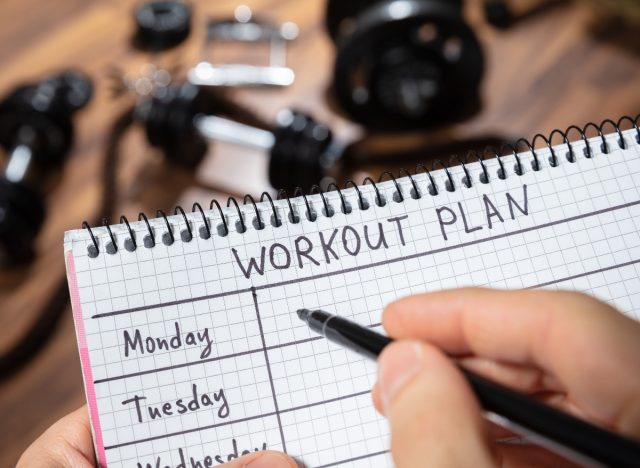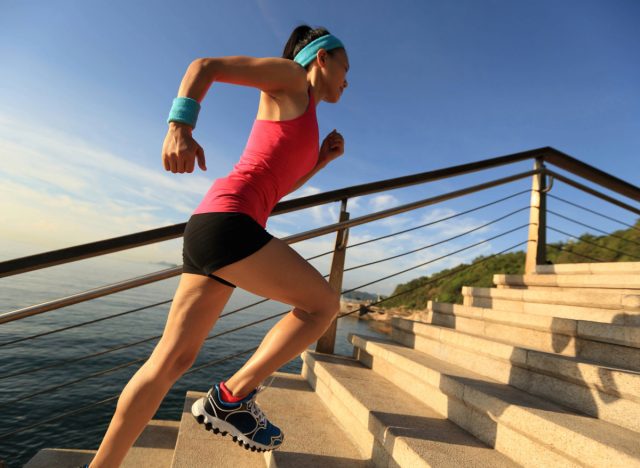5 Simple Daily Leg Moves That Make Stairs Easy After 60

Climbing stairs shouldn’t leave you breathless or gripping the handrail for dear life. Yet for many people over 60, what once felt effortless now feels like a mountain to conquer. The good news is that with the right exercises, you can reclaim your strength and confidence on any staircase. These five simple leg moves will help you tackle stairs with ease and get back to living life without limitations.
Why Your Legs Get Weaker After 60

As we get older, many of our physical capacities, such as muscle mass, strength, power, body composition, and endurance, tend to degrade due to disuse. This is considered a normal part of aging, but in my professional experience working with active agers, there’s nothing normal about losing your ability to physically thrive and live an active life.
More specifically, to the stair challenges for this population, we tend to gain around 10 pounds of fat per decade after the age of 30, and lose 3-8% muscle mass per decade after the age of 30. Simply put, at 60, we’ve gained significant fat, lost significant muscle, and likely are dealing with a host of orthopedic issues, painful movements, and reduced daily physical capacities. When you’re overly fat, under-muscled, and inactive, everything, including climbing a flight of stairs, gets harder.
Your Legs Are the Foundation of Everything

The body’s function runs through the lower body. Think of leg exercises, specifically resistance and strength training movements, as the highest-yielding form of preventative physical health. The stronger our legs, the more robust we are in performing daily tasks.
Since the legs are weight-bearing, we also have components of coordination, balance, and mobility that are trained with lower-body focused exercise as well. Lower body training is associated with increased health and vitality, and can even improve metabolic health and chronic disease risk mitigation due to its increased relative intensity as compared to upper body training.
5 Leg Moves That Make Stairs Easy After 60
Split Squats Build Real-World Strength
More than 80% of our movement lives happen in asymmetrical single-leg stances, so we need to be training that more! This includes climbing stairs.
How to do it:
- Start in a half kneeling position on the ground, stacked up at right angles of 90 degrees on the front and back knees
- Simply stand up from this position
- Use a pad under your knee if you have sensitivities there
- Move slowly and under control
- Keep tension in your core, bracing and active feet on the ground
- Complete a full range of motion
Goblet Squats for Functional Movement
Grab a dumbbell and get it in front of your body in a front rack position that integrates shoulder and spine stability while we squat.
How to do it:
- Hold the dumbbell in front of your chest
- Unlock your hips and knees at the same time
- Allow your body to travel downward in a vertical line
- Your knees can naturally move forward, hips back, and spine in a neutral position
- Drive back up, thinking about pushing your feet into the ground
- Enjoy a spine-safe, functional movement that also mobilizes the hips
Romanian Deadlifts: The King of Lower Body Moves
The king of all lower body movements that stretches your hamstrings, grows your glutes, and can mitigate the risk of injury at the commonly painful site of the lower back.
How to do it:
- Grab a weight with a neutral spine
- Push your hips back and engage the entire back side of the body
- Reverse the motion and come back up into neutral
- Keep the weight close to the body, whether you’re using dumbbells, barbells, or bands
- Ensure you are going through your complete range of motion
Step Ups Practice What You Need
Choose a short step between 8-12 inches to start with and step up, just as you would a stair you’d climb.
How to do it:
- Drive up through the top leg, using the entire lower body
- Bring the opposite leg up to the elevation
- Don’t forget to step down slowly and under control
- The eccentric lowering phase is likely the most beneficial for building powerful deceleration muscles that are the brakes when you need them the most, avoiding falls.
Loaded Walking Builds Total-Body Strength
Walking under load via a weight vest, backpack, or carrying light loads in the hands has the ability to add stress on the entire musculoskeletal system in a safe and effective way for the 60+ population.
How to do it:
- Simply strap up or pick up the weights, and walk
- Stay upright, walk with normal strides
- Choose a challenging duration that elevates your heart rate and trains your body for gait strength
- Start light and progress wto eights as you adapt to the stress
- A little bit of load goes a long way to start
RELATED: 5 Easy Standing Exercises That Will Melt Your Love Handles Right Off After 40
Your Weekly Exercise Plan

Strength training 2-3x/week utilizing big full body movements is the minimum effective dose to get stronger, move better, and start protecting your body and your health.
This same routine can be run for months as you see improvement.
And as you get stronger, don’t forget to keep the challenge coming with more weight with the same quality form and execution.
Practice Makes Perfect

Another tip to note here is practicing the actual task of stair climbing! In addition to strength training for the lower body, one can see marked improvement in days to weeks. It’s amazing to see how fast the body responds and adapts to specific stresses, like stair climbing.
Unlike many other tasks, this can be built into your daily life. Choose to walk, choose the stairs, and get an extra round or two in if you can. Things will bounce back quickly, and you’ll be looking for your next hill to climb.
Dr. John Rusin is the author of the forthcoming book Pain-Free Performance: Move Better, Train Smarter, and Build an Unbreakable Body (releasing October 21, 2025). It’s a complete guide to building strength, mobility, and resilience at any age. Pre-order now and get exclusive bonuses.